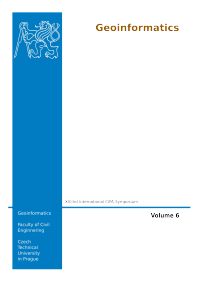The Standard of Management and Application of Cultural Heritage Documentation
DOI:
https://doi.org/10.14311/gi.6.44Keywords:
cultural property, database, data interpretation, digitizing, official integration data systemAbstract
Using digital technology for cultural heritage documentation is a global trend in the 21 st century. Many important techniques are currently under development, including 3D digital imaging, reverse engineering, GIS (Geographic Information Systems) etc. However, no system for overall management or data integration is yet available. Therefore, we urgently need such a system to efficiently manage and interpret data for the preservation of cultural heritages. This paper presents a digitizing process developed in Taiwan by the authors. To govern and manage cultural property, three phases of property conservation, registration, restoration and management, has been set up along a timeline. In accordance with the laws of cultural property, a structural system has been built for project management, including data classification and data interpretation with self-documenting characteristics. Through repository information and metadata, a system catalogue (also called data dictionary) (Figure 1) was created. The primary objective of the study is to create an integrated technology for an efficient management of databases. Several benefits could be obtained from this structural standard: (1) cultural heritage management documentation can be centralized to minimize the possibility of data re-entry resulting inconsistency, and also to facilitate simultaneous updating of data; (2) since multiple data can be simultaneously retrieved and saved in real time, the incidence of errors can be reduced; (3) this system could be easily tailored to meet the administrative requirements for the standardization of documentation exchanged between cultural properties institutions and various county and city governments.References
UNESCO World Heritage Center (2008), Operational Guidelines for Implementation of the World Heritage Convention.
Jukka Jokilehto(1999). A History of Architectural Conservation. pp.290.
Prepared by the National Library of Australia (2003), GUIDELINES FOR THE PRESERVATION OF DIGITAL HERITAGE
Downloads
Published
2011-12-21
Issue
Section
Articles
License
- Authors retain copyright and grant the journal right of first publication with the work simultaneously licensed under a Creative Commons Attribution License that allows others to share the work with an acknowledgement of the work's authorship and initial publication in this journal.
- Authors are able to enter into separate, additional contractual arrangements for the non-exclusive distribution of the journal's published version of the work (e.g., post it to an institutional repository or publish it in a book), with an acknowledgement of its initial publication in this journal.
- Authors are permitted and encouraged to post their work online (e.g., in institutional repositories or on their website) prior to and during the submission process, as it can lead to productive exchanges, as well as earlier and greater citation of published work (See The Effect of Open Access).

